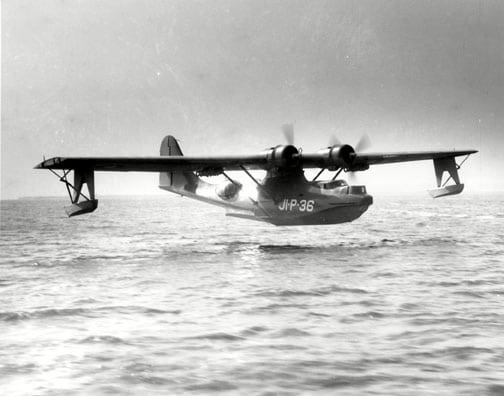Consolidated PBY Catalina History
The Consolidated PBY Catalina was one of the oddities of the war. A 1933 design, it was widely used by the US Navy, but was nearly obsolete by 1940. With no immediate replacement in sight, it was kept in production by the U.S. Naval Aircraft Factory (NAF) at two Consolidated factories and in two Canadian plants. Eventually, it distinguished itself by becoming the most prevalent flying boat of all time: 3,276 were built in the U.S. and Canada, plus an estimated 150 Consolidated PBY Catalina aircraft under licence in Russia.
In competition against Douglas XP3D-1 patrol plane, Consolidated’s XP3Y was the winner and went into production as the dual-purpose PBY-1 patrol bomber – the first monoplane ordered by Navy for service with the fleet. The PBY-1 aircraft could carry up to 2,000 lb (907 kg) of bombs, and were armed with four 0.30 in machine-guns.
The prototype’s powerplant was the 825 hp Pratt & Whitney R-1830-58 twin-row engine but this grew to the 1,200 hp R-1830-92 in the final PBY-5A and PBY-6A models. The most notable outward changes were the large transparent blisters over the side gun ports (first shown on the PBY-4) and the retractable tricycle landing gear introduced on the PBY-5A (“A” for amphibian) which greatly increased usefulness and production. A taller tail appeared on the NAF PBN-1 and the later PBY-6A.
The PBY Catalina saw service in all theatres of the war. An RAF. Consolidated PBY Catalina spotted the elusive German battleship Bismark, and this lead to its destruction. U.S. Navy PBY-5s and 5As were used for the additional duty of air-sea rescue, particularly in the Pacific, where some carried lifeboats. Other PBYs, painted dull, matte black, were used for night intruder operations against the Japanese. Rescue PBY Catalinas were nicknamed “Dumbo,” while the intruders were referred to as “Black Cats.”
The Consolidated PBY Catalina possessed a performance that enabled it to maintain its viability with the military and naval air arms of many countries, as well as in a commercial transport role, for many years after the war, particularly in South America. Among those still operating Catalinas for maritime reconnaissance up to the mid-1960s were Argentina, Brazil, Chile, Ecuador and Mexico, at which time Nationalist China, Dominica, Indonesia and Peru still used the type for search and rescue, and France and Israel retained a few for miscellaneous duties.










